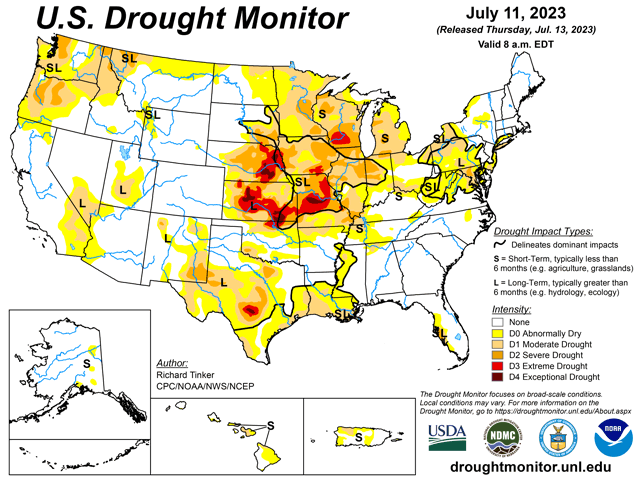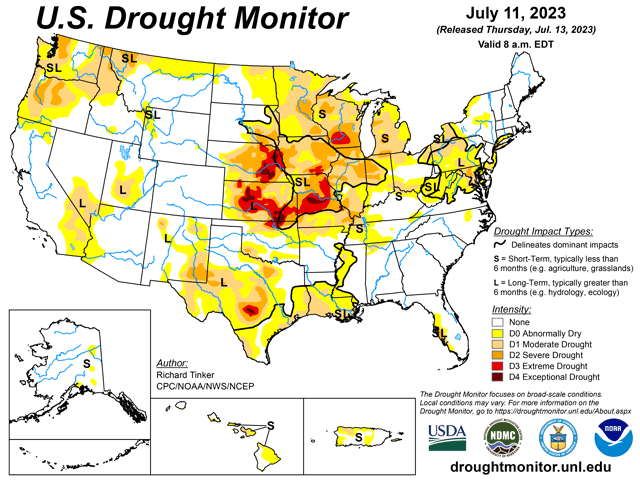Ag Weather Forum
How Much Rain Will It Take to Get Out of Drought?
The U.S. Drought Monitor (USDM) has been tracking expanding drought conditions in the Corn Belt for the last six weeks. Recent rainfall has been able to take a few bites out of the drought in some areas but has not been consistent enough to eliminate drought anywhere. And those areas that do not see the rain are seeing drought continuing to grow. It is a fair question to ask: How much rain will it take to end the drought?
According to the National Drought Mitigation Center's (NDMC) website, it is not a simple number. Drought is a "convergence of evidence" of several different indicators that fall into one of these categories: precipitation, streamflow, reservoir levels, temperature and evaporative demand, soil moisture, vegetation health, impact reports from media outlets and private citizens, and the input of over 450 local experts throughout the country. In other words, you cannot objectively determine if you will get out of the drought categories by a simple look at the past week's rainfall. There are more indicators that go into it.
P[L1] D[0x0] M[300x250] OOP[F] ADUNIT[] T[]
In an email to DTN, Brian Fuchs, geoscientist, climatologist, and one of the authors of the USDM at the NDMC, wrote, "There is a subjective nature to this work, but all of the authors follow the same guidance in that we don't just look at the best or the worst indicators, but where the majority of them are converging...the impact of a single rain event on the entire water balance/water cycle of an area is not always easiest to capture when looking at individual indices, but when we start looking at them all, we get a better idea of how much the drought improved/degraded in a given week. That is why straight precipitation data does not tell the full story. An area could be considered 'normal' for annual precipitation, but that number does not tell you how many events occurred or how hard the rains came." This suggests what may be important for agricultural drought may not fit for ecological or socio-economic drought. A rainfall event may improve conditions for one more than the other, and it is up to the USDM authors to take all that into account when drawing categories.
This also means a simple look at the map does not tell the whole story. The change over time is also important, especially for agriculture. Going from D4 -- exceptional drought -- to D2 -- severe drought -- will have a different meaning than going from no drought to D2. Momentum is important in agriculture because it is often an indicator of soil moisture availability for crops or pastures to use. Crops can be in good standing in drought conditions or could have limitations when drought is not indicated on the map. We saw that firsthand in late May when farmers were noting drier soils while the Drought Monitor was still reluctant to put down even a D0 -- abnormal dryness -- over much of the Corn Belt.
The categories on the Drought Monitor map become a little more complicated and the Center notes it is impossible to describe all the impacts with a single map for all locations. Precipitation is a highly variable event both across distance and time and getting the impacts for all sectors into one map is a challenge. However, the Center does do a good job of assessing the main impacts for most sectors. Drought classification on the Drought Monitor is not a declaration of drought -- only governments can make those declarations. But the map and its comments are tools for those decision-makers to use.
To find updated radar and analysis from DTN, head over to https://www.dtnpf.com/…
John Baranick can be reached at john.baranick@dtn.co
(c) Copyright 2023 DTN, LLC. All rights reserved.






Comments
To comment, please Log In or Join our Community .